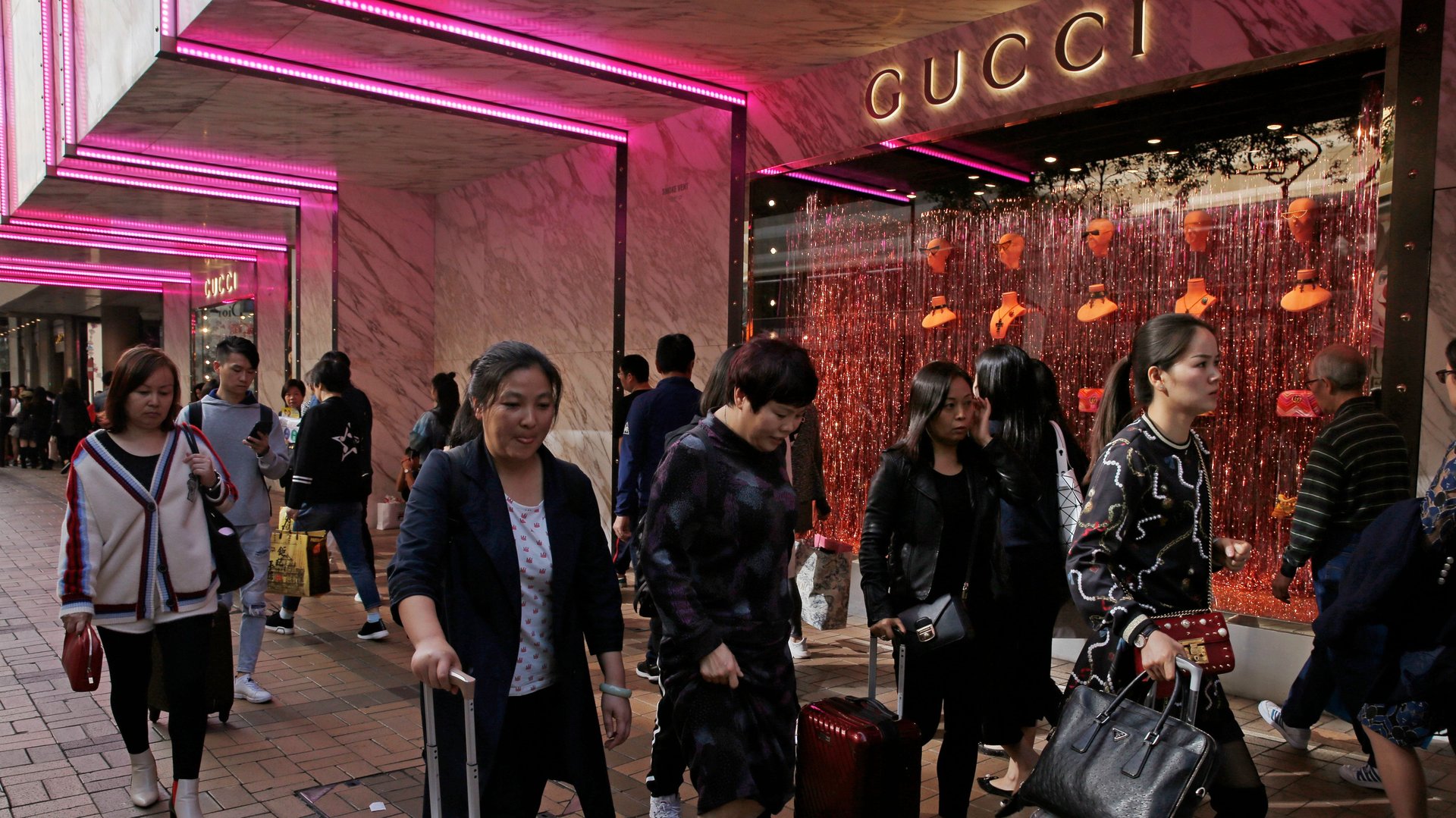China is set to overtake the US as the world’s largest fashion market in 2019
In 2019, China is poised to reach a milestone that signals how the rebalancing of economic power in the world is reshaping industries with it.


In 2019, China is poised to reach a milestone that signals how the rebalancing of economic power in the world is reshaping industries with it.
“The year ahead is one that will go down in history,” write consultancy McKinsey & Company and media outlet The Business of Fashion in their joint report on the state of fashion in 2019. “Greater China will for the first time in centuries overtake the US as the world’s largest fashion market.”
The wealth of China’s nearly 1.4 billion people is rapidly multiplying, creating legions of new consumers with disposable income to spend on things such as sports, entertainment, and of course, clothes and shoes. It’s shaping the way the fashion industry operates. Italian label Ermenegildo Zegna, for example, now looks to China, not the US, as the place where it tests new products before deciding whether to roll them out around the world.
Many luxury labels already depend heavily on Chinese customers, who have for some time been the world’s biggest buyers of luxury goods, counting the purchases they make both inside their home country and while traveling. Thanks to the ascendance of young shoppers, as well as government policies meant to encourage shopping inside the country, much of that spending is moving back inside Greater China’s borders.
Luxury is only part of the consumption picture in China, of course, particularly since most of the population still can’t afford luxury prices. Sports brands such as Nike and Adidas are investing heavily in their Chinese businesses, as the growing middle class has more leisure time and money to devote to exercise and fitness. And then there’s the giant, booming market for inexpensive clothes (paywall). Much of that demand is satisfied not by Western brands, but by local ones such as Heilan Home, Peacebird, and La Chapelle.
Though China has long had a taste for international labels, more Chinese are now embracing homegrown brands. Achim Berg, who leads McKinsey’s global apparel, fashion, and luxury practice, said during a press briefing about the report at Business of Fashion’s Voices conference in Oxfordshire, UK, that international brands established in the market look to be cooling off some. “We also see that there are local brands now coming up and becoming relevant,” he said. “I think this desire to only buy international brands in the mid-markets is also waning a bit.”
Simon Lock, CEO of Ordre.com, which provides online showrooms to connect wholesale brands and retailers—and boasts Alibaba as an investor—commented during the briefing that he’s seen many of the Chinese students who go abroad to study fashion more often returning home to start their lines, rather than staying in New York or London as they typically had in the past. “They are now all rushing back to Shanghai and Beijing and establishing really good beachhead businesses in China before they start their international expansion,” he said.
As all this continues, so does China’s growth. Kevin Sneader, McKinsey’s global managing partner, pointed out during a talk at Voices that, under a moderate scenario of growth, China will add a number of consumers and spending power roughly equivalent to Germany’s current economy by 2025.